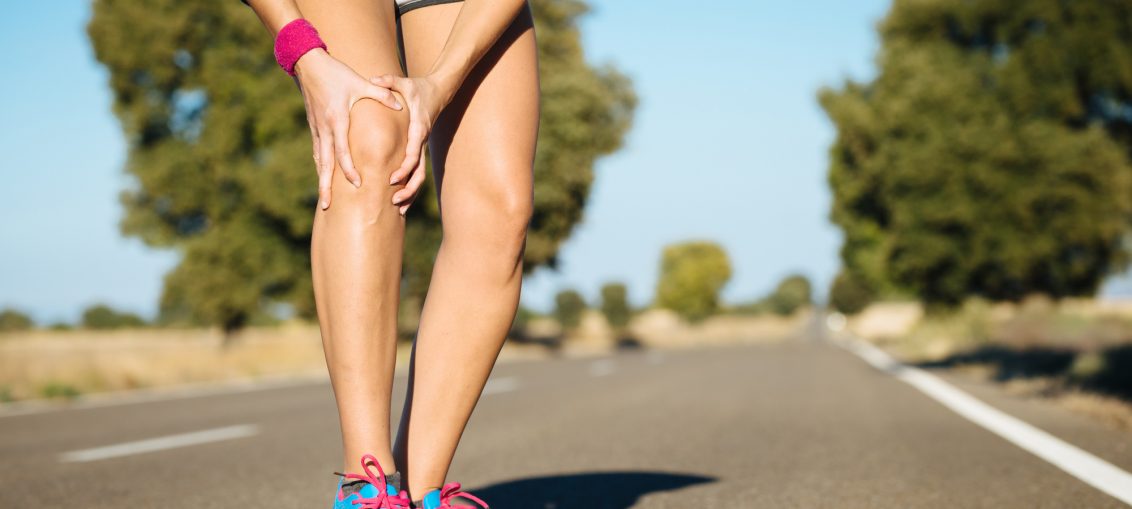
Sports knee injuries are extremely common in nearly every sport. It’s a crucial point of flexion, as nearly every sport requires walking, running, kicking, or lifting.
Regardless of the sport, you’re bending your knees, placing tremendous pressure on them hundreds, if not thousands, of times over the course of one event or competition.
This is especially true for triathlons, as it combines 3 different athletic competitions: a 1.2-mile swim, a 56-mile bike, and a 13.1-mile run. During a triathlon, you’re exerting a lot of pressure on your knees for a tremendously long period of time.
Among the triathletes, 60% had Patellofemoral Syndrome, 20% had Patellar Instability, and another 20% had ACL injuries.
It’s only natural that your knees would see some wear-and-tear and get injured. Below are some of the most common sports injuries that triathletes experience.
Patellofemoral Syndrome
The “patella” is a medical term for the bone commonly known as your kneecap. The top of this bone is connected to the quadriceps tendon and the bottom is connected to the patellar tendon.
The patella bone sits in a groove on top of your knee called the trochlear groove. The underside of the patella bone has a pad of cartilage that helps the bone slide up and down this groove as you bend or extend your knee.
Patellofemoral Syndrome, more commonly known as “runner’s knee,” occurs when the nerves surrounding the tendons, cartilage, and bones mentioned above sense pain.
This pain can occur for one of two reasons. The first is simply overuse. It’s easy to overtax your knees during a triathlon since every aspect of it requires flexion of the knees — the running portion being the most severe of the bunch.
The second cause of Patellofemoral Syndrome can be patellar malalignment, where the patella is running up and down the trochlear groove incorrectly. As a result of malalignment, the patella is pushed out to either side of the groove, resulting in soft tissue irritation.
This malalignment can be the result of poor technique or muscular imbalance in the quadriceps or other muscles around the knee.
Treatment
If your Patellofemoral Syndrome is the result of simple overuse, then treatment is easy but frustrating.
You simply just have to stay off your knee or reduce your physical activity until the pain goes away. If you continue to stress the knee, the inflammation may further damage the cartilage in your knee.
You can also utilize the RICE method to rehab your knee:
- Rest your knee. Refrain from putting pressure on it.
- Ice your knee for 20-minute intervals several times a day.
- Compress your need with an elastic sleeve to prevent swelling.
- Elevate your knee, making sure that it’s higher than your heart as often as you can. This will help further reduce inflammation by drawing blood away from your knee.
You can also use over-the-counter anti-inflammatory and pain relief drugs to treat your injury.
If pain persists you may need to see a doctor, or your pain may be the result of patellar malalignment.
If it’s the latter, you’ll need to adjust your technique, your training, or both to correct the issue. Making sure that your knee is in alignment with the upper-half of your leg when you run and doing exercises that strengthen the knee are good places to start.
You may need to see a physical therapist to truly correct the issue, however.
Patellar Instability
Patellar Instability is simply a more extreme instance of Patellar Malalignment. Here, the patella completely dislocates from the trochlear groove. This can cause very acute pain and make your knee feel like it’s “giving out.”
This can be caused by a specific traumatic event or as a result of a physical abnormality like an inadequately deep trochlear groove. In the latter case, this patellar dislocation can be chronic.
Treatment
Unfortunately, this problem requires surgical treatment. Depending on the specific reason the instability, there are few different surgical procedures that may take place.
If the instability is caused by the ligaments connecting to the patella is too tight, your surgeon may perform a “lateral release” which loosens or disconnects the ligaments from the patella entirely.
If the instability is the result of a shallow trochlear groove, your surgeon will make the groove deeper.
ACL Injury
ACL stands for the Anterior Cruciate Ligament, which sits outside of your knee and connects your lower leg bone to your upper leg bone.
ACL injuries can be mild strains or tears, or they can be completely debilitating and extremely painful. You ACL can get damaged if your knee joint is bent backward, twisted, or bent to the side. This can happen as a result of physical contact or by changing directions, landing from a jump, or slowing down from a run.
Because ACL injuries most frequently occur as a result of rapid movement, they’re less likely to happen during a triathlon than other knee injuries.
Treatment
Because ACL tears are in-the-moment injuries, and not as a result of wear-and-tear, they require immediate attention.
Once you feel your ACL pop, request first aid and use the aforementioned RICE method immediately.
Once under control, you’ll need to see a doctor immediately. Depending on the severity of the tear, you’ll need to go through a rehab process or undergo surgical treatment to repair the ligament.
Need Health Tips to Avoid Sports Knee Injuries?
Maintaining healthy joints, practicing healthy techniques, and performing sustainable training habits are crucial to your success as a triathlete.
Sports knee injuries are particularly important to avoid or treat adequately if they happen to occur.
If you need more tips and information on how to keep your body healthy when training for triathlons, check out the health and fitness section of our website.
